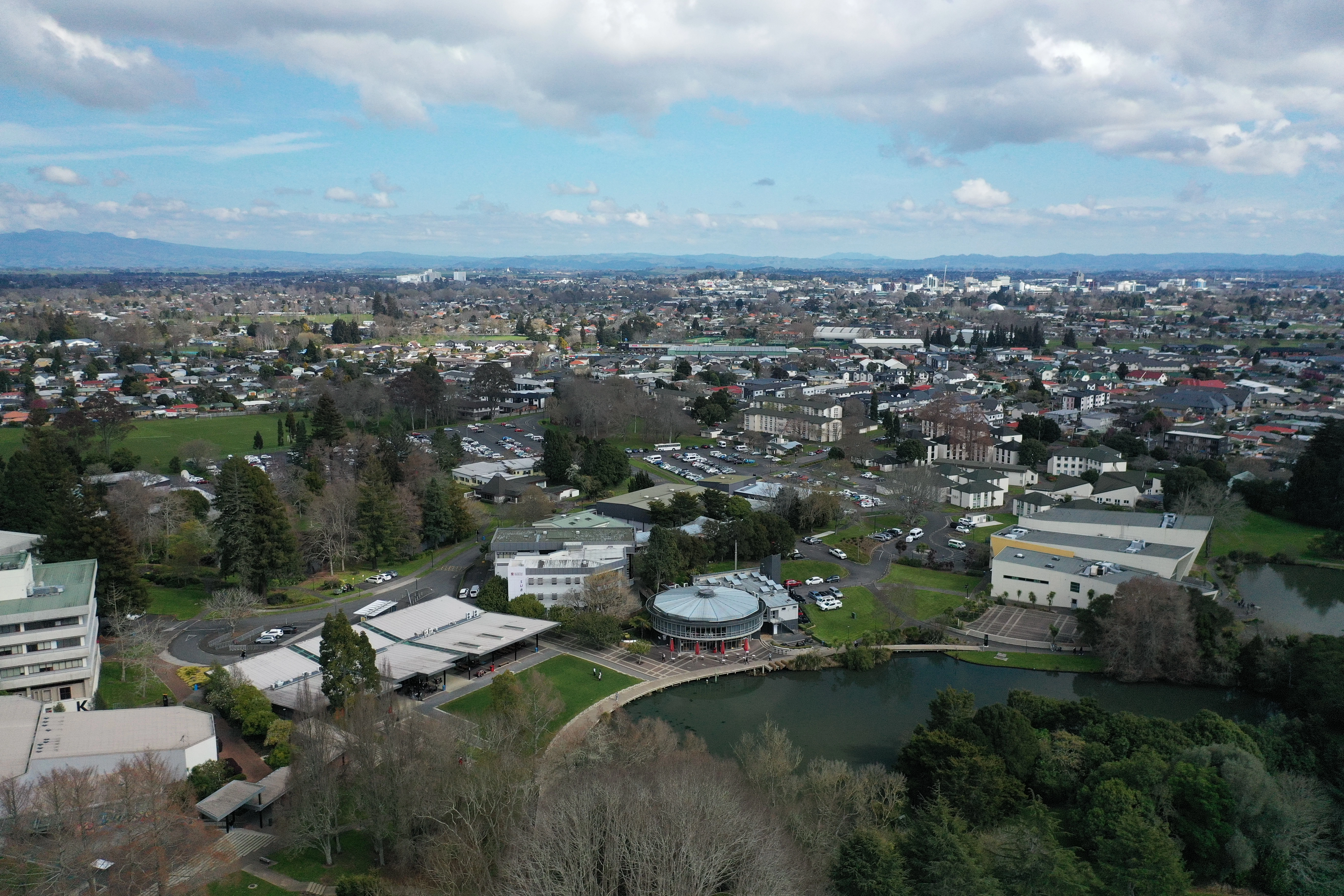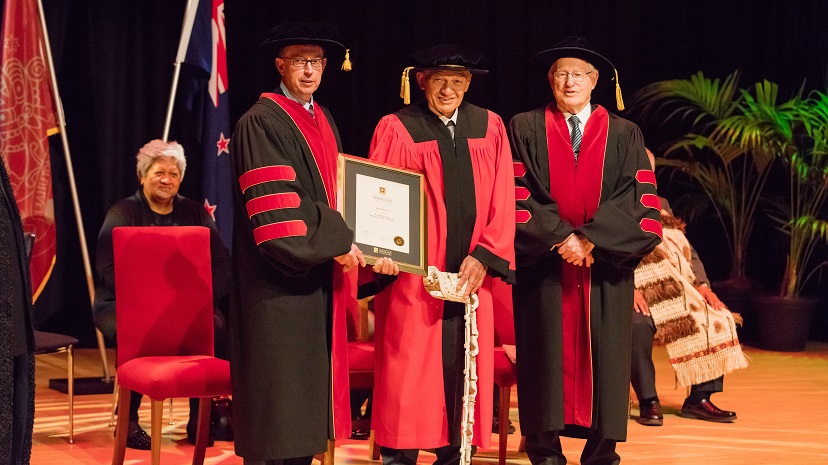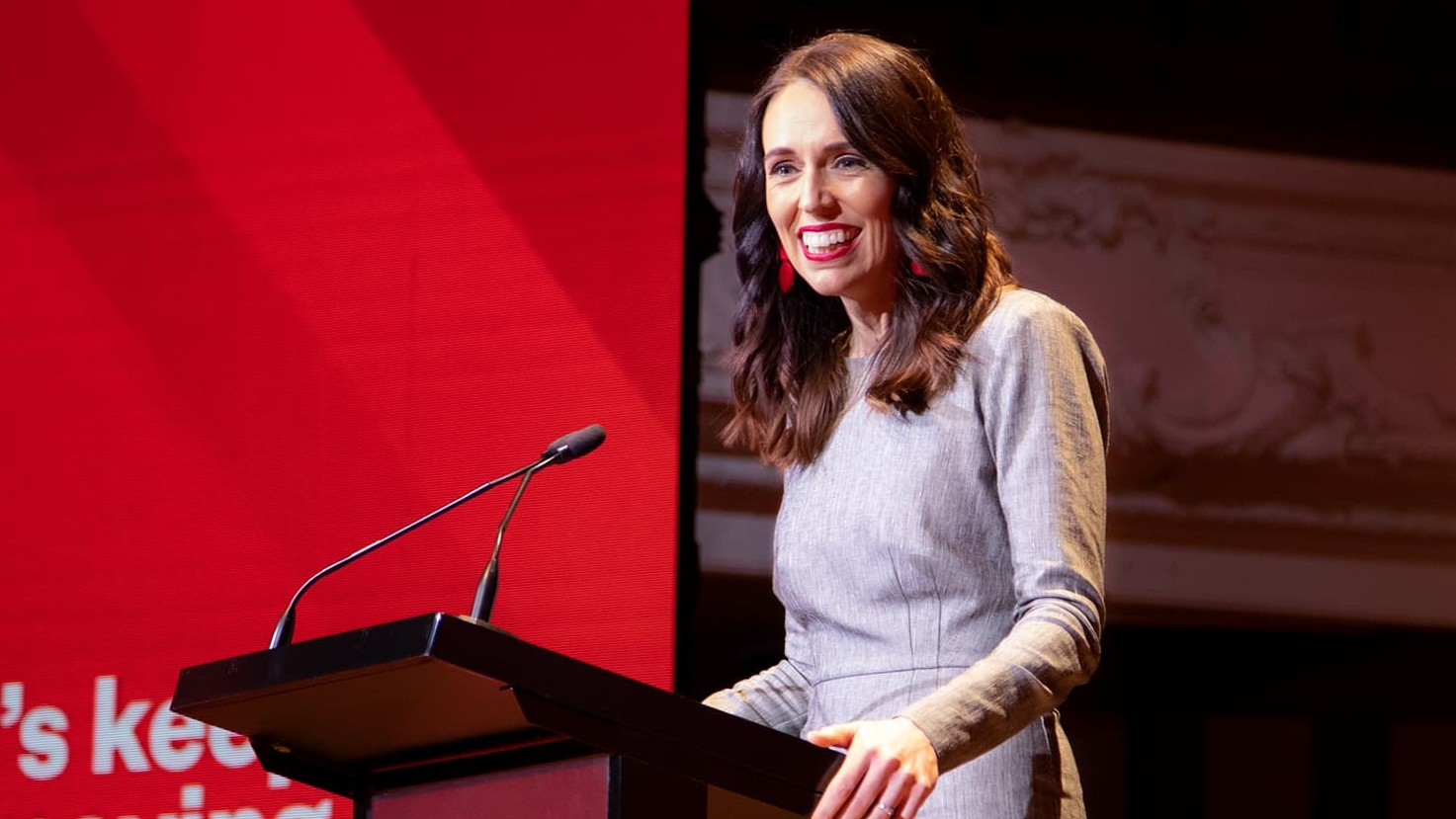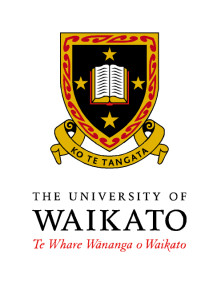History of The University of Waikato
From the beginning, the University of Waikato has not been afraid to do things differently.

The University of Waikato opened in 1964 after many years of energetic lobbying by a group of Hamilton locals, determined to have a university in their city. To begin with, facilities were sparse, but in early 1965 new buildings were officially opened by then Governor-General Sir Bernard Fergusson. Sir Don Llewellyn was the founding Vice-Chancellor.
By the 1980s, Waikato was the fastest-growing university in New Zealand. Computer Science became an increasingly popular study choice and the thriving Department was elevated to a School of Computing and Mathematical Sciences in 1987.
The University always had a close relationship with its neighbouring teachers’ college and, leading the way for others to follow, became the first university in New Zealand to combine with its regional teachers’ college. Through its teaching programmes, the University began to establish a presence in Tauranga.
The University of Waikato has a longstanding relationship with the Kīngitanga and Waikato-Tainui, who are the traditional owners and custodians in the Waikato region. The University’s Hamilton campus is based on land originally inhabited by Ngāti Wairere and Ngāti Hauā of Tainui. Much of this land was confiscated in 1864 by the colonial government following the Waikato Land Wars, an act later found to be in breach of the Treaty of Waitangi.
To redress this, the Crown signed a settlement with Waikato-Tainui in 1995, part of which vested the land on which the Hamilton campus stands in the title of the first Māori King, Pōtatau Te Wherowhero, to ensure it could not be alienated. It is now leased to the University by Waikato-Tainui.
In 1991 Te Rōpū Manukura was formed as a consultative body to the University Council. It now sits in partnership with the University Council as the Kaitiaki (guardian) of the Treaty of Waitangi for the University. Te Rōpū Manukura is currently made up of members from over 20 different iwi within the catchment area of the University.
In 2009, Kīngitanga Day was established as a way to honour and strengthen the connection between the University, Kīngitanga, Waikato-Tainui, and many other iwi across the country. Kīngitanga Day is a community-focused event and is celebrated annually in September.

King Tuheitia receiving an Honorary Doctorate in 2016
The University began with just over 100 students in 1964, and celebrated its first 20 graduates of the Bachelor of Arts in 1967. We have grown a lot since then, and now have more than 13,000 students annually from all over New Zealand and the world.
Alumni
The University of Waikato's alumni community has over 90,000 alumni worldwide. This community provides opportunities to expand your networks and stay connected with the University. Alumni relations are looked after by our Development Office, which also looks after fundraising.
An alumnus is a student who has completed an approved and assessed course.
Notable alumni in the public office
- Rt Hon Jacinda Ardern, New Zealand’s 40th Prime Minister
- Adrian Orr, Governor of the Reserve Bank of NZ
- Lt Gen Rt Hon Sir Jerry Mateparae GNZM, QSO, KStJ, former Governor General of New Zealand, and former Defence Force Chief
- Dr Judy McGregor CNZM, NZ’s first Equal Employment Opportunities Commissioner
- Dr Arthur Grimes, former Governor of the Reserve Bank of NZ
- Judge Stephanie Milroy, Māori Land Court Judge and former Deputy Chair, Waitangi Tribunal
- Judge Craig Coxhead, Māori Land Court Judge and Chief Justice of Niue
Business leaders
- Jan Zijderveld, former CEO of Avon, now Director of Pandora
- Dr Andrew Smith, CEO of Prolife Foods
- Vittoria Shortt, CEO of ASB Bank, NZ
- Kevin Bowler, CEO of My Food Bag NZ
- Dr Shane Legg CBE, Co-founder and Chief Scientist Google DeepMind
- Dr Craig Nevill-Manning, former Head of Engineering at Sidewalk Labs New York, now Distinguished Software Engineer at Google
- Dan Ammann, CEO of Cruise, USA, former President of General Motors
Cultural and sport icons
- Dr Michael King OBE, historian and writer
- Wayne Smith CNZM, former All Blacks coach
- Dame Hinewehi Mohi MNZM, Managing Director, Raukatauri Productions Ltd, singer and songwriter, co-founder and trustee of the Raukatauri Music Therapy Centre
- Rob Waddell ONZM, Olympic rower and yachtsman
- Santiago Cañón Valencia, cellist
- Dr Deborah Challinor, historian and writer

Former Prime Minister Jacinda Ardern is a University of Waikato alumna
Vice-Chancellors
The Vice-Chancellor is responsible for leading the University and overseeing the implementation of University Council policies.
The University of Waikato has had five Vice-Chancellors.
- Sir Donald R Llewellyn, 1964-1984
- Dr Wilfred G Malcolm, 1985-1994
- Bryan C Gould, 1994-2004
- Dr Roy J Crawford, 2005-2014
- Dr Neil C Quigley, 2015 - present
Campus development
The University of Waikato campus in Hamilton covers 65 hectares, built on what was previously farmland. Originally designed by architect John Blake-Kelly, the campus has developed over time to include an impressive array of facilities set amidst tranquil gardens, lakes and sports grounds.
These facilities include the Gallagher Academy of Performing Arts – the concert chamber’s near-perfect acoustics regularly attract international artists for performance and recording.
The Student Centre - Te Manawa, which houses the library and provides a central study space for students, was opened in 2011.
The Pā, which will include a marae and spaces for students to work and relax.
Tauranga Campus opened in 2019. Previously, the University shared facilities with Toi Ohomai Institute of Technology in the Bay of Plenty. The $60 million campus development was possible through the support and drive of the region, especially key funders Tauranga City Council, Bay of Plenty Regional Council and the Tauranga Energy Consumer Trust who all saw the need to enhance the range of qualifications and study options available to students in the Bay of Plenty.
The University of Waikato was the first New Zealand university to receive Chinese Ministry of Education approval to fully deliver degrees in China. The first cohort of students started at the University’s Joint Institute with Hangzhou City University (HZCU) in Hangzhou in late 2017, and enrolments continue to increase across the three Waikato degree programmes being offered at HZCU.
Coat of Arms
 The University of Waikato's first coat of arms was designed by Professor Beadle in 1965, featuring the open book as a symbol of learning, surrounded by the four stars of the Southern Cross. The original University motto, 'Sapere est iucundum', emphasised the value and pleasure of learning.
The University of Waikato's first coat of arms was designed by Professor Beadle in 1965, featuring the open book as a symbol of learning, surrounded by the four stars of the Southern Cross. The original University motto, 'Sapere est iucundum', emphasised the value and pleasure of learning.
In the mid 1990s, the University updated the Coat of Arms to reflect its commitment to biculturalism. Our motto, Ko Te Tangata, means 'For the People', articulating the University's philosophy that people are central to the institution and are our most valued resource. The addition of a stylised red pītau or fern frond border symbolises new birth, growth, vitality, strength and achievement.
The Coat of Arms design is in the University's colours of black, red and gold. For information on using our Coat of Arms, please contact the Marketing Division.